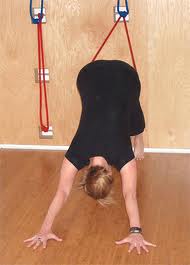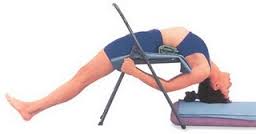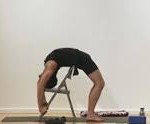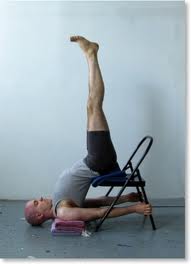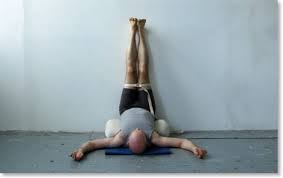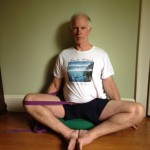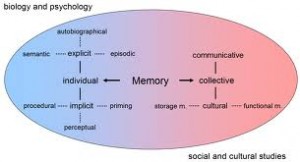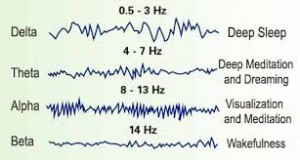Primary Theme of Course: monitoring and modulating the flow of energy and information, from our home base in the Infinite, Luminous Now, to bring our unique creativity into the present moment.
Opening meditation: Resting in Stillness: Allowing time to flow right on through.
 Most of the time we experience our ‘selves’ as moving through time; getting through the day, week, year. A simple change of perspective allows the sense of time to flow through us. This is what Eckhart Tolle calls the ‘Power of Now’, now being the infinite present through which time, and all creation, spontaneously flows. This is also the point of view of Purusha, the drastuh svarupe of sutra I-3, of atman, and many more words and phrases that point to ‘the timelessness of being’. This is home. Stabilize presence here.
Most of the time we experience our ‘selves’ as moving through time; getting through the day, week, year. A simple change of perspective allows the sense of time to flow through us. This is what Eckhart Tolle calls the ‘Power of Now’, now being the infinite present through which time, and all creation, spontaneously flows. This is also the point of view of Purusha, the drastuh svarupe of sutra I-3, of atman, and many more words and phrases that point to ‘the timelessness of being’. This is home. Stabilize presence here.
Main Theme Weekend 6: Mind, Part 3: Selves: Unique, Universal and more…
Selves: We are tracking the ongoing flow of energy and information moving through various layers of embodiment. In part three of our explorations of the layers of mind, we have come to the mental creations that are involved in the ‘sense of self’, the ‘I, me and mine’ thoughts. As mentioned in Mind: Part 1, the role of a mature ahamkara is to create a sense of self that can remain stable while it organizes the many layers and levels of mental life. This requires integration with the buddhi, the innate intelligence. This is not necessarily an easy process as, for most of us, the buddhi is lees than fully developed and this self sense morphs into a complex constellation of competing and limited ‘selves’, each claiming to be the true ‘I am’. As these are contructs of prakriti, they are inherently limited and impermanent and thus cannot be the ‘True Self’ or Purusha.
As we discover in mindfulness, where and how we pay attention greatly shapes this self sense and the development of these partial selves. Also, awakening simply allows attention to have a deeper and longer sense of just resting in ‘Now” /timelessness/drashtu svarupe/ Purusha. This resting in timelessness will gradually shift the self sense from the partial selves to “I am this (timelessness), the “True Self”. Then the True Self is both Unique and Universal and operates through the other ‘selves’ to bring creativity to the world.
Because we also inhabit the world of time, prakriti, or impermanence, as the Buddhists would say, we have and need these other ‘selves’ that appear and modify our energy, our behavior, our actions in the world. Some of these ‘selves’ are creative, compassionate and wise, and arise out of our deep connection to the fullness of the present moment, the True Self. We want to nurture these. Others are small-minded, self-centered, petty, and destructive. These sources of suffering are based upon trauma, habit and conditioning and can be modified through mindful attention and thoughtful practice, what Patanjali calls in I-2, ‘citta vrtti nirodha’, ‘resolving the dysfunctional mind states into healthy flow, or ‘citta prasadana‘ from I-33.
 I have experience with two approaches to the exploration of these ‘selves’ which come from western psychotherapy. The first is known as “Internal Family Systems”, and was developed originally by Richard Schwartz. In brief, the IFS model postulates that the human mind often has numerous ‘sub personalities or selves, that are called ‘parts’, (implying that none are the ‘whole’ person). They are probably of different ages, with different skills, deficits, life experiences and desires. They are all valuable and necessary to the healthy functioning mind, but, for various reasons, often take on more problematic, conflicted or destructive roles.
I have experience with two approaches to the exploration of these ‘selves’ which come from western psychotherapy. The first is known as “Internal Family Systems”, and was developed originally by Richard Schwartz. In brief, the IFS model postulates that the human mind often has numerous ‘sub personalities or selves, that are called ‘parts’, (implying that none are the ‘whole’ person). They are probably of different ages, with different skills, deficits, life experiences and desires. They are all valuable and necessary to the healthy functioning mind, but, for various reasons, often take on more problematic, conflicted or destructive roles.
Also, in IFS there is a “Self”. This Self is the seat of consciousness, is already and always highly integrated, and ideally is the CEO of the mind. Its role is to delegate authority and mediate disputes among the parts. The Self is not a part, but can be lost in the background noise of conflicted parts. Think of it as the integrated linking of Ahamkara and Buddhi, to use the yogic terminology. The role of IFS therapy is to help differentiate the Self from the parts, establish the “Self” at the center where it belongs, and help the ‘self identity’ remain grounded in the ‘Self’, rather than jumping from part to part. The centered ‘Self’ can then help resolve conflicts amongst the parts  by giving each a voice to be heard and a role to play in the ongoing flow of mind activity.
by giving each a voice to be heard and a role to play in the ongoing flow of mind activity.
According to IFS, when trauma upsets the mental/emotional system, polarization arises among the parts and they organize into warring factions, usually taking on extreme roles. These factions generally fall into three categories. The managers try to ‘maintain control of the confusion, usually by repressing the injured, wounded, unhappy parts. These unhappy parts, known as ‘exiles‘, are too painful for other voices to acknowledge, so they are kept ‘locked up’ in the unconscious. If any of the exiles ‘escape’ and start to demand attention, or take over, the ‘firefighters’ jump in and try to ‘extinguish’ the intensity of the exiles. They will try anything to dissipate the fire, including encouraging over-indulgences in drugs, alcohol, food or sex. Thus, although they seem to have the same goal as the managers, that is, keeping the exiles quiet, firefighters often operate by creating even more damage and suffering, leading to even stronger exiles, requiring more work from the managers. It is a vicious cycle of repression, explosion and suffering. Only reestablishing the ‘Self” can begin to restore order to the system.The role of the therapist is to help the client ‘differentiate the ‘Self’ from the parts, and then facilitate a dialogue between the Self and the various parts, to help sort out healthy roles.
The second pyscho-therapeutic approach that I have experienced is known as the ‘Big Mind’ process, an offshoot of “Voice Dialogue”, created by Hal and Sidra Stone. Big Mind comes from the insight of Zen Master Genpo Dennis Merzel, or Genpo Roshii, who met  the Stones when they were brought in to help resolve some conflicts in the Zen center he was involved with. He later combined Voice Dialogue with Zen insight to expand the number of ‘voices’ available. In Big Mind, the word ‘voices’ is synonymous with ‘parts’ in IFS. They are the sub personalities of the psyche and can be dualistic or non-dualistic. You can see the obvious parallels to IFS in the voices. Some dualistic ones include the: protector, controller, seeker, doubt, anger, fear, the damaged self, victim, the wounded child, shame and the rejected one. The non dualistic voices can include Big Mind, Big Heart, Great Joy, Great Gratitude , Great Doubt, and the Master. These all arise from a grounded sense of Self as unbounded and free. Like in IFS, the dualistic voices have a key role to play, but need to be seen, heard and integrated into the ongoing flow. The Non-dualistic voices are responsible for this healing.
the Stones when they were brought in to help resolve some conflicts in the Zen center he was involved with. He later combined Voice Dialogue with Zen insight to expand the number of ‘voices’ available. In Big Mind, the word ‘voices’ is synonymous with ‘parts’ in IFS. They are the sub personalities of the psyche and can be dualistic or non-dualistic. You can see the obvious parallels to IFS in the voices. Some dualistic ones include the: protector, controller, seeker, doubt, anger, fear, the damaged self, victim, the wounded child, shame and the rejected one. The non dualistic voices can include Big Mind, Big Heart, Great Joy, Great Gratitude , Great Doubt, and the Master. These all arise from a grounded sense of Self as unbounded and free. Like in IFS, the dualistic voices have a key role to play, but need to be seen, heard and integrated into the ongoing flow. The Non-dualistic voices are responsible for this healing.
As you explore your own inner voices, you may find some that are familiar and some that have been hiding. Name them if you can and let them speak. Be observant and creative. Create voice collectives or sub systems that can work together harmoniously. If the exiles manage to escape surreptitiously and you find yourself reeling from the emotional shock waves, you have to find ground and some spaciousness. Then you (the Self) can negotiate.
Pranayama: Viloma I and II
Viloma breathing involves a creating a series of pauses during the flow of inhalation and exhalation, like walking up and down stairs. Viloma I is (roughly): inhale-inhale-pause-inhale-inhale-pause-inhale-inhale -pause- normal exhalation -pause- next cycle.Viloma II is (roughly): normal inhalation, pause-exhale-exhale-pause-exhale-exhale-pause-exhale-exhale- pause – next cycle. If you are a natural inhaler, Viloma I will feel easy and Viloma II more challenging. If you are a natural exhaler, vice versa. It seems to be 50 – 50 in the yoga population.
Of the 5 prana vayus, prana and apana come first. Prana is the expanding of inhalation, apana the squeezing/condensing of exhalation. In Viloma we find the ‘seed of the opposite’ in the cycles, finding apana in the pranic inhalation and prana in the apanic exhalation. Later in the asanas, we will explore how the samana vayu acts to help integrate prana and apana.
Practice 1: If you are a beginner, use the pauses to reverse direction a bit. In viloma I, inhale-inhale-slight exhalation-inhale-inhale-slight exhalation etc. Viloma II is: exhale-exhale-slight inhalation-exhale-exhale-slight inhalation etc. I call this ‘Looping’ Viloma as the energy loops at each pause.
Practice 2: If that is comfortable, use the pauses to begin to differentiate ribs and diaphragm. Inhalation is used to expand the ribs/chest/intercostals, exhalation to tone abdominal wall and stretch and lengthen the diaphragm. Viloma I: inhale-inhale-inhale-keep chest expanding as you squeeze the belly in from the sides and peel the edges of the diaphragm in away from the ribs; inhale – inhale- repeat -etc. Viloma II: exhale-exhale-exhale-expand the chest out-keeping the diaphragm squeezing inward – exhale-exhale etc.
Practice 3: When the ribs and diaphragm are in harmony, the pauses of Viloma are an opportunity to rest in deep stillness, neither inhaling nor exhaling. This is preparation for the longer kumbhakas or retentions in ujjayi pranayama.
 Asana Inquiry: Opening 3rd chakra energies to help integrate prana and apana. In posture and movement, we find that the solar plexus region mediates between the upper and lower limbs to facilitate effortless movement.
Asana Inquiry: Opening 3rd chakra energies to help integrate prana and apana. In posture and movement, we find that the solar plexus region mediates between the upper and lower limbs to facilitate effortless movement. In the photo on the left, the limbs load or charge up the 3rd chakra with chi as the head and tail stay long and open. Then, as seen below, the energy explodes out opposite directions through the limbs which come up off the ground. They land and the cycle repeats as long as the cheetah is running. Can we find this action in every pose, starting with tadasana.
In the photo on the left, the limbs load or charge up the 3rd chakra with chi as the head and tail stay long and open. Then, as seen below, the energy explodes out opposite directions through the limbs which come up off the ground. They land and the cycle repeats as long as the cheetah is running. Can we find this action in every pose, starting with tadasana.
We can start by doing one leg at a time. Standing near a wall and facing it, bend one knee up to the chest, opening the kidneys and liver. when you next extend the leg down and back in an arc, try not to use the spinal muscles or quads. Track the circular flow down the DFL. Do not force the heel to the floor or you may compress the ankle. Do each side a few times and then add an arm. As the knee comes to the chest, also fold in your arm. When you extend the leg down, extend the arm up. eventually ad tail and head. Soak into the 3rd chakra, then squeeze and squirt into all six limbs (leg, leg, arm, arm, tail, head.)
Repeat above in all standing poses and downward dog pose, and then transition to flipping the dog, adding the spiral. Then explore same action in sphynx, bent knee sphynx, salabhasana, dhanurasana and ustrasana. If you are doing inversions, explore in sirsasana and sarvangasana.
 More advanced work: explore above in jumping from bakasana to chaturanga or plank. Remember to extend through crown chakra as well as tail to balance the move. For some help with this, here is a blog post from Kathryn Budig.
More advanced work: explore above in jumping from bakasana to chaturanga or plank. Remember to extend through crown chakra as well as tail to balance the move. For some help with this, here is a blog post from Kathryn Budig.
Day 2. Same as above and add parvottanasana as intro to revolved half moon, triangle and side angle as well as pigeon. Maintain the ‘cheetah action’.
Sutras Discussion: In the sutra on saucha, II-40, cleanliness, there are some derogatory comments on the body. Only highly repressed males could come up with this one. Please take the anti -feminine sutras and commentary as patriarchal bs and an interesting historical note, and then move on. Is cleanliness important. Of course. On many levels. But how does that become ‘hugging your loved ones is repellent’ ! ! ? ?
The yamas and nyamas are about having healthy, positive relationships, with your ‘selves’ and with others. They are common sense and key rules for any society.
Our discussion on the ‘selves’ comes back to PYS I-4, vrtti saryupyam itaratra. At other times, i.e., when not in the state of ‘yoga’, i.e., not knowing the ‘Self’ as infinite being), there is identification with the parts, with mind activity posing as “Self”. Vrttis are not a problem. Multiple parts/voices/sub-personalities are not a problem. Only when there is identification with them, when the ahamkara lands in the world of form and confuses ‘I AM’ with something limited, is there an issue that needs addressing, as this is suffering.








